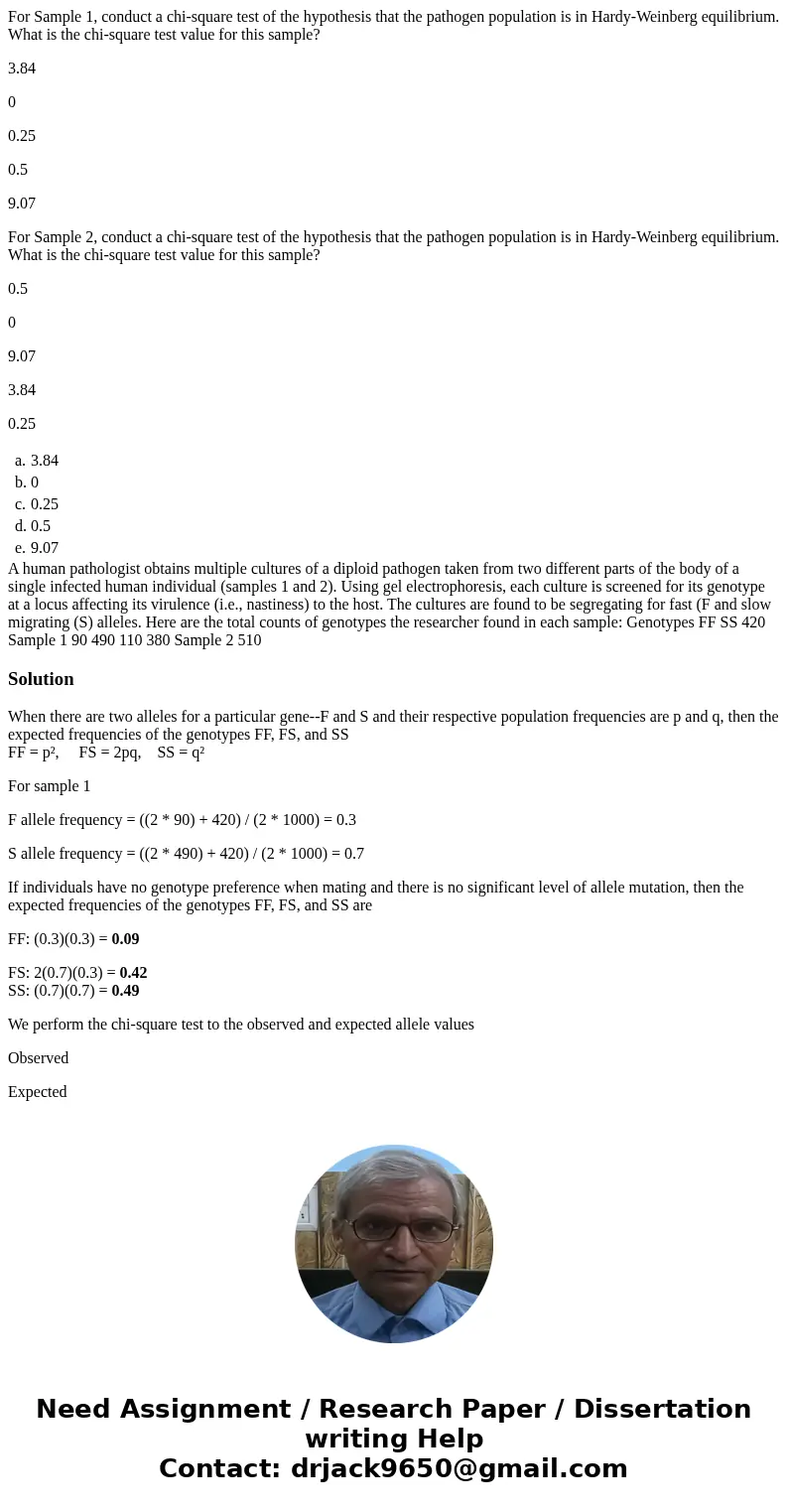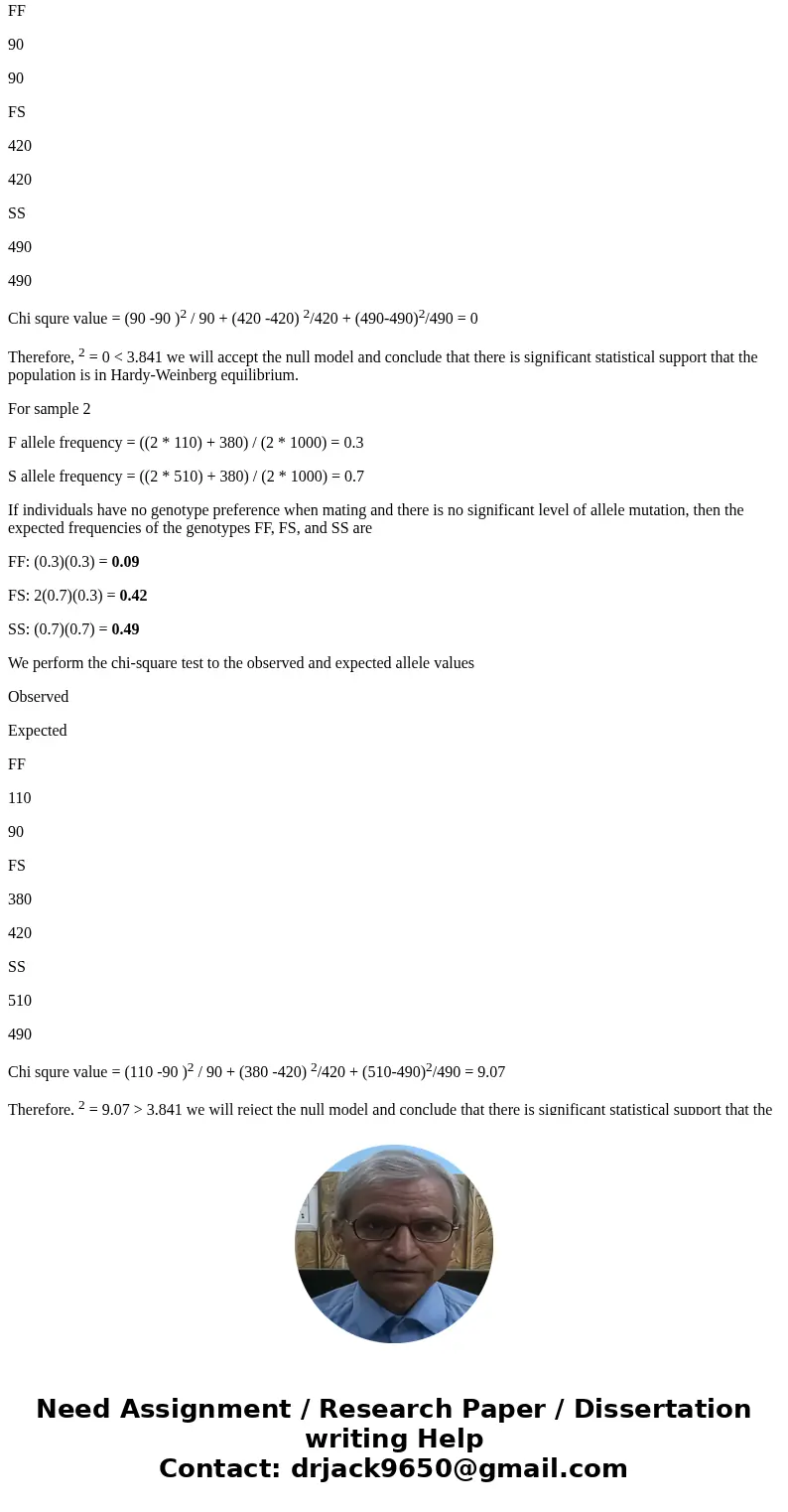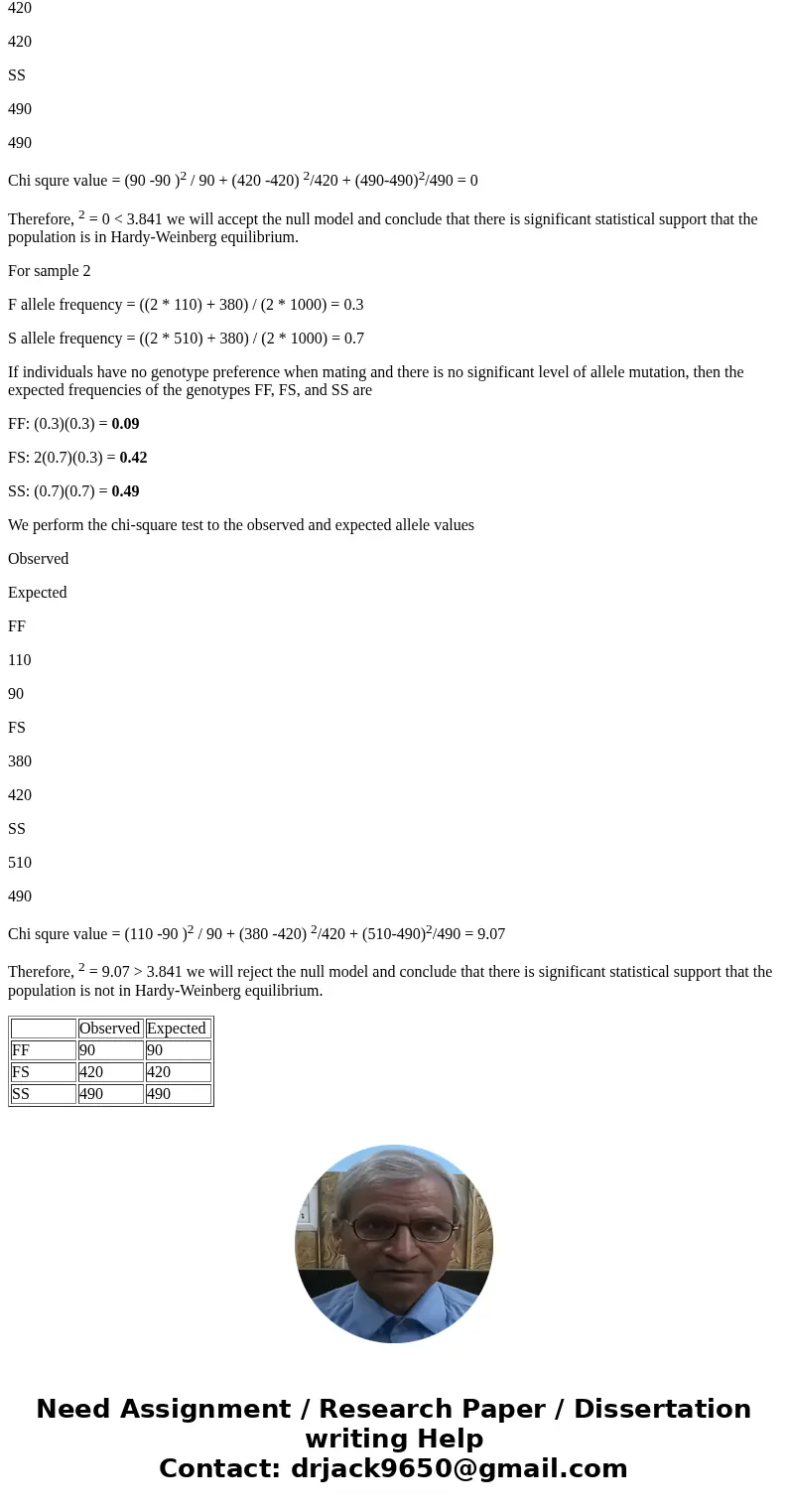For Sample 1 conduct a chisquare test of the hypothesis that
For Sample 1, conduct a chi-square test of the hypothesis that the pathogen population is in Hardy-Weinberg equilibrium. What is the chi-square test value for this sample?
3.84
0
0.25
0.5
9.07
For Sample 2, conduct a chi-square test of the hypothesis that the pathogen population is in Hardy-Weinberg equilibrium. What is the chi-square test value for this sample?
0.5
0
9.07
3.84
0.25
| a. | 3.84 | |
| b. | 0 | |
| c. | 0.25 | |
| d. | 0.5 | |
| e. | 9.07 |
Solution
When there are two alleles for a particular gene--F and S and their respective population frequencies are p and q, then the expected frequencies of the genotypes FF, FS, and SS
FF = p², FS = 2pq, SS = q²
For sample 1
F allele frequency = ((2 * 90) + 420) / (2 * 1000) = 0.3
S allele frequency = ((2 * 490) + 420) / (2 * 1000) = 0.7
If individuals have no genotype preference when mating and there is no significant level of allele mutation, then the expected frequencies of the genotypes FF, FS, and SS are
FF: (0.3)(0.3) = 0.09
FS: 2(0.7)(0.3) = 0.42
SS: (0.7)(0.7) = 0.49
We perform the chi-square test to the observed and expected allele values
Observed
Expected
FF
90
90
FS
420
420
SS
490
490
Chi squre value = (90 -90 )2 / 90 + (420 -420) 2/420 + (490-490)2/490 = 0
Therefore, 2 = 0 < 3.841 we will accept the null model and conclude that there is significant statistical support that the population is in Hardy-Weinberg equilibrium.
For sample 2
F allele frequency = ((2 * 110) + 380) / (2 * 1000) = 0.3
S allele frequency = ((2 * 510) + 380) / (2 * 1000) = 0.7
If individuals have no genotype preference when mating and there is no significant level of allele mutation, then the expected frequencies of the genotypes FF, FS, and SS are
FF: (0.3)(0.3) = 0.09
FS: 2(0.7)(0.3) = 0.42
SS: (0.7)(0.7) = 0.49
We perform the chi-square test to the observed and expected allele values
Observed
Expected
FF
110
90
FS
380
420
SS
510
490
Chi squre value = (110 -90 )2 / 90 + (380 -420) 2/420 + (510-490)2/490 = 9.07
Therefore, 2 = 9.07 > 3.841 we will reject the null model and conclude that there is significant statistical support that the population is not in Hardy-Weinberg equilibrium.
| Observed | Expected | |
| FF | 90 | 90 |
| FS | 420 | 420 |
| SS | 490 | 490 |



 Homework Sourse
Homework Sourse